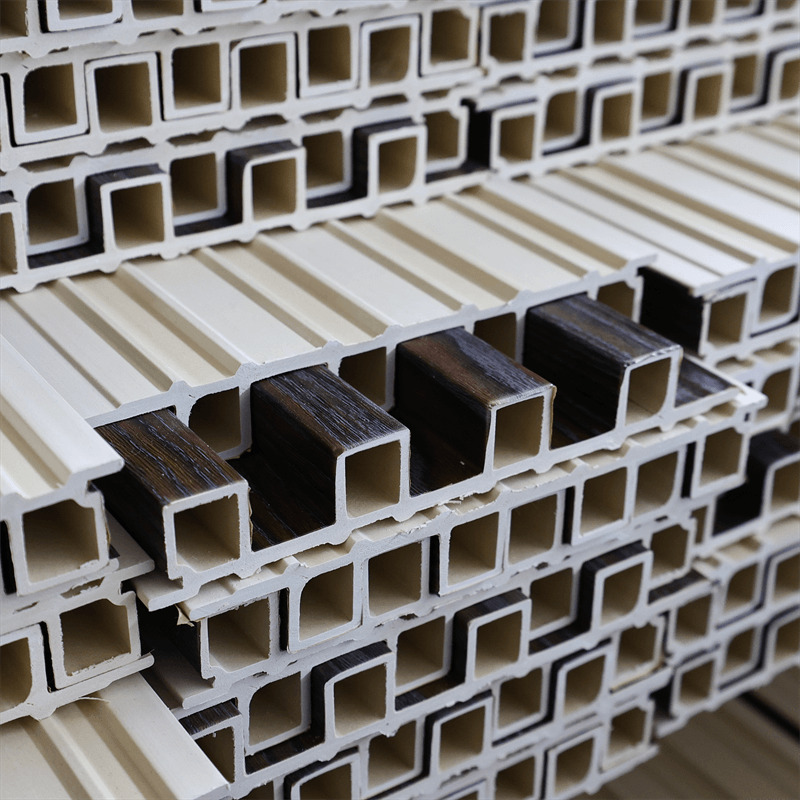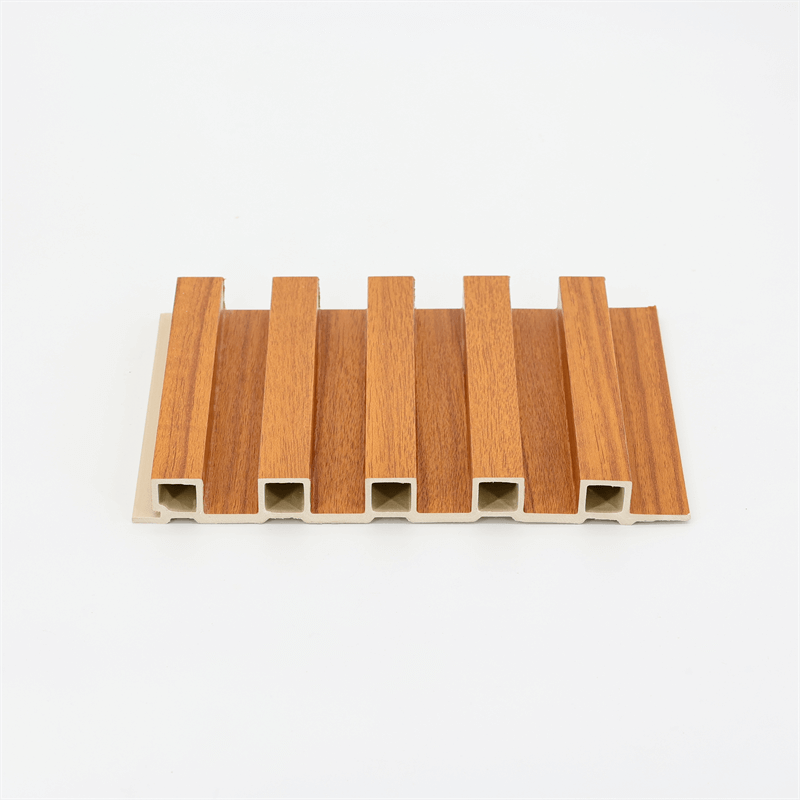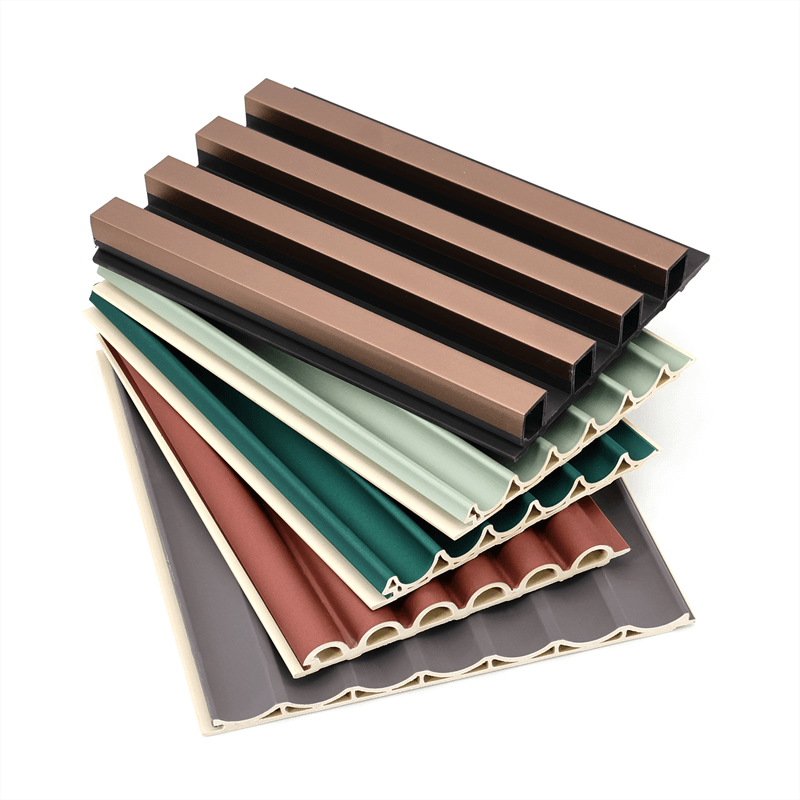Cost is a significant consideration in any construction project, and architects and designers are constantly seeking cost-effective solutions that do not compromise on quality and aesthetics.
In recent years, WPC (Wood Plastic Composite) wall panels have emerged as a viable and cost-effective option for modern architecture.
These panels offer a range of benefits, including affordability, durability, sustainability, and design versatility.
In this essay, we will explore the cost-effectiveness of WPC wall panels in modern architecture, focusing on their initial affordability, long-term savings, low maintenance requirements, and design flexibility.

I. Initial Affordability:
One of the primary advantages of WPC wall panels is their initial affordability. Compared to alternative cladding materials such as natural wood, stone, or metal, WPC panels are generally more budget-friendly.
The cost of WPC panels is lower than that of traditional materials due to their composite nature, which combines recycled wood fibers and thermoplastics.
The production process of WPC panels is efficient and cost-effective, resulting in a product that offers significant savings during the initial construction phase.
Architects and designers can achieve their desired aesthetic and functional outcomes while adhering to budget constraints, making WPC panels an attractive choice for cost-conscious projects.
II. Long-Term Savings:
While the initial affordability of WPC wall panels is noteworthy, their long-term savings potential is equally compelling.
WPC panels are engineered to be durable and resistant to environmental factors such as moisture, rot, decay, and insect infestation.
These characteristics contribute to the panels’ longevity, reducing the need for frequent replacements or repairs.
By choosing WPC panels, building owners can save on maintenance and replacement costs over the lifespan of the structure.
Unlike natural wood, WPC panels do not require staining, sealing, or painting, saving both time and money associated with maintenance tasks.
Their resistance to wear and tear further minimizes the need for repairs, making them a cost-effective choice in the long run.
III. Low Maintenance Requirements:
WPC wall panels offer low maintenance requirements, which translate into cost savings for building owners.
Unlike natural wood, WPC panels do not require frequent maintenance tasks such as sanding, varnishing, or resealing.
Regular cleaning with mild detergent and water is sufficient to keep the panels looking their best.
The low maintenance requirements of WPC panels not only save on labor costs but also reduce the need for expensive cleaning products and specialized equipment.
Additionally, the panels’ resistance to stains, scratches, and fading ensures that they retain their visual appeal with minimal effort.
IV. Design Flexibility:
Design flexibility is another aspect that contributes to the cost-effectiveness of WPC wall panels in modern architecture.
These panels offer a wide range of design possibilities, allowing architects and designers to achieve their desired aesthetic outcomes without exceeding budget limitations.
WPC panels come in various sizes, shapes, textures, and finishes, providing versatility in design.
They can replicate the appearance of natural wood, stone, or other materials, offering a cost-effective alternative to expensive cladding options.
The panels can be customized in terms of color, allowing for coordination with existing design elements.
Furthermore, WPC panels are easy to cut, shape, and install, providing flexibility in creating unique design features and architectural elements.
The ability to adapt the panels to specific design requirements eliminates the need for additional materials or complex construction techniques, reducing costs without compromising on design integrity.
WPC wall panels offer a cost-effective solution for modern architecture, combining initial affordability with long-term savings.
Their lower initial cost compared to alternative cladding materials makes them a budget-friendly choice for construction projects.
The durability of WPC panels ensures long-term savings by reducing maintenance, repair, and replacement costs.
Their low maintenance requirements save on labor and cleaning expenses, while their design flexibility eliminates the need for costly materials or complex construction techniques.
As architects and designers continue to prioritize cost-effective solutions without compromising quality and aesthetics, WPC wall panels emerge as a practical choice in modern architecture.
By incorporating WPC panels into construction projects, professionals can achieve their desired outcomes while adhering to budget constraints,
making WPC panels a preferred option for cost-conscious and design-savvy projects.

In conclusion, WPC wall panels offer a cost-effective solution for modern architecture, providing a balance between affordability, durability, sustainability, and design versatility.
The initial affordability of WPC panels makes them an attractive choice for projects with budget constraints,
allowing architects and designers to achieve their desired aesthetic and functional outcomes without compromising on quality.
Furthermore, the long-term savings potential of WPC panels cannot be overlooked.
Their durability and resistance to environmental factors reduce maintenance, repair, and replacement costs over the lifespan of the structure.
The low maintenance requirements of WPC panels contribute to additional cost savings, eliminating the need for frequent and expensive upkeep.
Moreover, the design flexibility of WPC panels adds value to their cost-effectiveness.
The ability to customize the panels in terms of size, shape, texture, and color provides architects and designers with creative freedom, enabling them to achieve unique design features without exceeding budget limitations.
By choosing WPC wall panels, architects, designers, and building owners can benefit from the initial affordability, long-term savings, low maintenance requirements, and design flexibility they offer.
These panels serve as a practical and cost-effective solution for modern architecture, contributing to the success and sustainability of construction projects.
As the demand for cost-effective and sustainable building materials continues to rise, WPC wall panels emerge as an innovative and practical choice.
They provide a reliable and economical option for achieving high-quality, aesthetically pleasing, and durable structures while remaining within budget constraints.
Ultimately, WPC wall panels prove that cost-effectiveness and architectural excellence can go hand in hand in modern construction.

